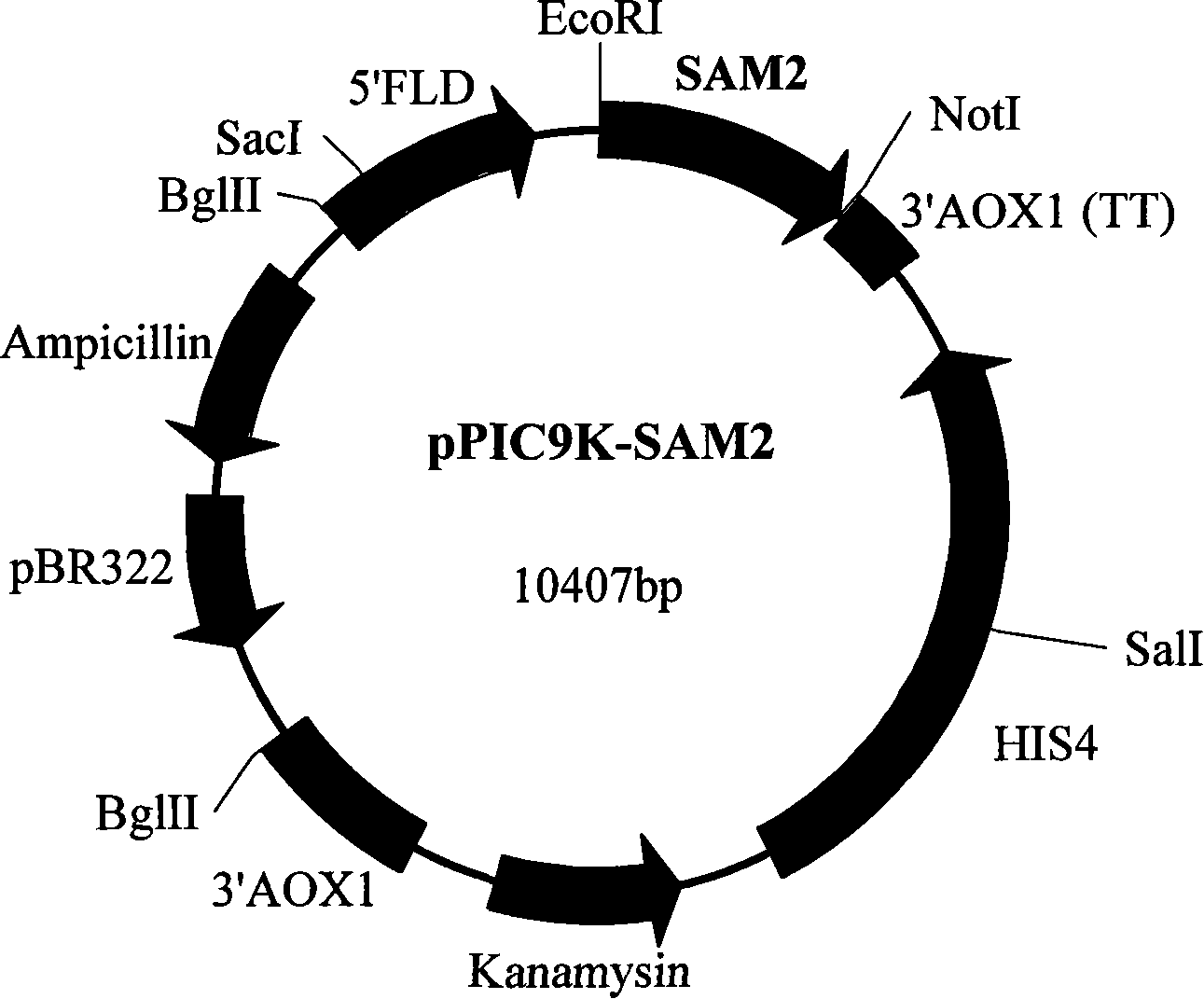Method for ferment for producing adenomethionine with genetic engineering bacterium
A technology of adenosylmethionine and genetically engineered bacteria, which is applied in the field of fermenting and producing adenosylmethionine with genetically engineered bacteria, can solve the problems that the progress has not been reported, and achieve the effects of short cycle, low cost, and less pollution
- Summary
- Abstract
- Description
- Claims
- Application Information
AI Technical Summary
Problems solved by technology
Method used
Image
Examples
Embodiment Construction
[0025]According to the SAM synthetase 2 gene (registration M23368) derived from S. cerevisiae in Genebank, the present invention designs two specific primers and obtains the enzyme gene through PCR amplification. The cloned SAM synthetase 2 gene derived from Saccharomyces cerevisiae was assembled into the expression vector pPIC9k of Saccharomyces cerevisiae to obtain the expression plasmid pPIC9k-SAM 2 , so that the SAM synthetase 2 gene is placed under the control of the promoter FLD1.
[0026] After the plasmids obtained above were linearized, they were transformed into the methanolic yeast Pichia pastoris host cell GS115 by means of protoplasts or electrotransformation. The promoter series or 3-terminal sequence in the expression plasmid improves homologous recombination with Pichi pastoris chromosomal DNA, so that the exogenous SAM synthetase 2 gene is integrated into the yeast chromosome and stably expressed in the recombinant cell. This recombinant expression mode integ...
PUM
 Login to View More
Login to View More Abstract
Description
Claims
Application Information
 Login to View More
Login to View More - R&D
- Intellectual Property
- Life Sciences
- Materials
- Tech Scout
- Unparalleled Data Quality
- Higher Quality Content
- 60% Fewer Hallucinations
Browse by: Latest US Patents, China's latest patents, Technical Efficacy Thesaurus, Application Domain, Technology Topic, Popular Technical Reports.
© 2025 PatSnap. All rights reserved.Legal|Privacy policy|Modern Slavery Act Transparency Statement|Sitemap|About US| Contact US: help@patsnap.com

